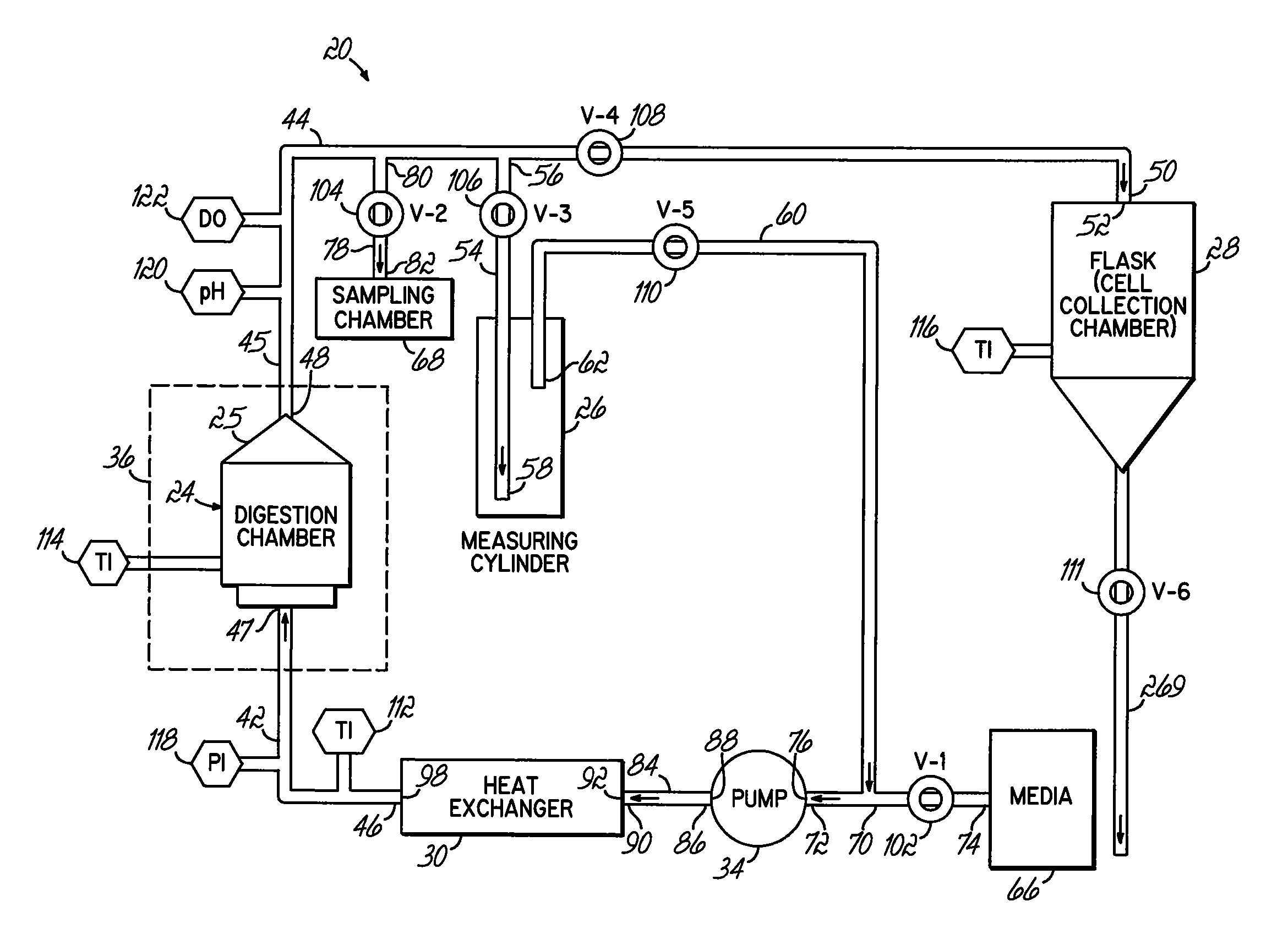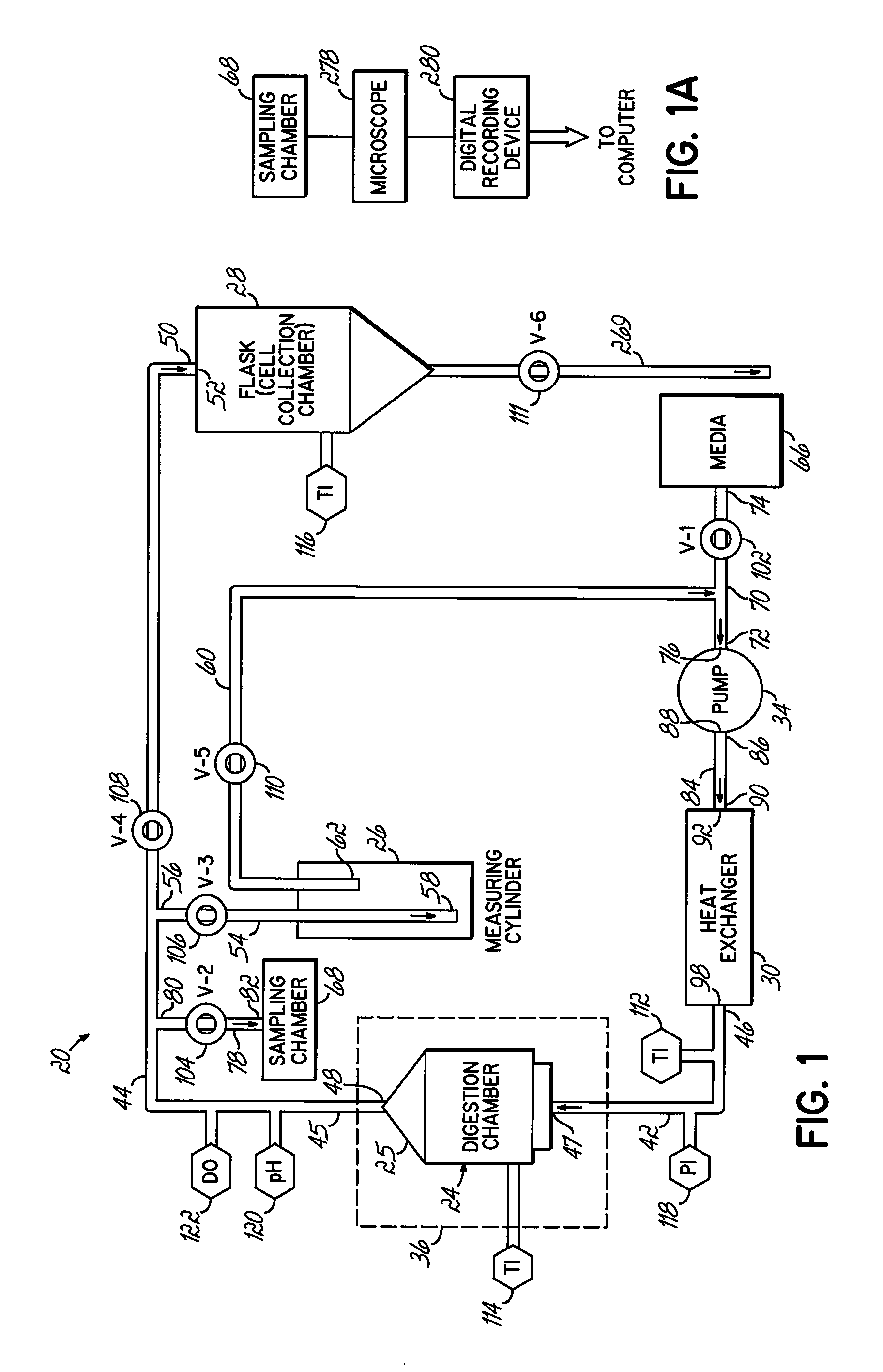Cell separation apparatus
a cell separation and apparatus technology, applied in biochemistry apparatus and processes, specific use bioreactors/fermenters, after-treatment of biomass, etc., can solve the problems of inability to cure diabetes, patient living at blood sugar levels out of balance with body needs, and inability to optimize cell separation process, etc., to achieve the effect of improving the quality and quantity of cell yield, reducing manpower and space requirements, and facilitating the optimization of cell separation process
- Summary
- Abstract
- Description
- Claims
- Application Information
AI Technical Summary
Benefits of technology
Problems solved by technology
Method used
Image
Examples
Embodiment Construction
[0040] With reference to the Figures, a cell separation apparatus 20 of the present invention includes a control box 22 which may house a digestion chamber 24. It may also include a measuring cylinder 26 and a cell collection chamber 28 interconnected with the digestion chamber 24. While in the illustrated embodiment, the digestion chamber 24 and measuring cylinder 26 are located within the control box 22 and the cell collection chamber 28 is located outside the control box 22, it will be recognized by those having skill in the art that any combination of components may be located within the control box 22. These components form a recirculating loop. The cell separation apparatus 20 may further include sensors 112,114, 116,118,120,122 which monitor parameters of the digestion process to complete a closed feedback loop for control and optimization of the digestion process. The cell separation apparatus 20 may further include a heat exchanger 30 for raising and lowering temperatures i...
PUM
 Login to View More
Login to View More Abstract
Description
Claims
Application Information
 Login to View More
Login to View More - R&D
- Intellectual Property
- Life Sciences
- Materials
- Tech Scout
- Unparalleled Data Quality
- Higher Quality Content
- 60% Fewer Hallucinations
Browse by: Latest US Patents, China's latest patents, Technical Efficacy Thesaurus, Application Domain, Technology Topic, Popular Technical Reports.
© 2025 PatSnap. All rights reserved.Legal|Privacy policy|Modern Slavery Act Transparency Statement|Sitemap|About US| Contact US: help@patsnap.com



